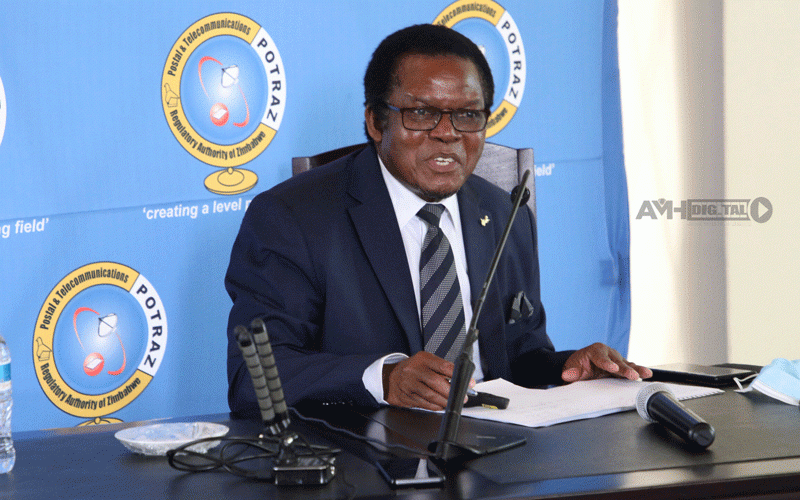
THE Postal and Telecommunications Regulatory Authority of Zimbabwe (Potraz) has more than doubled the data and voice tariffs to rescue the capital-intensive sector, reeling from the sharp depreciation of the local currency.
This is the third time that tariffs have been increased this year after reviews in February and April.
Since April, the local currency has depreciated by 444%, against the greenback, to US$1: ZWL$5 695,9159 on Wednesday, meaning that telecommunications needed to raise prices to maintain the value of their services.
In an interview with NewsDay Business yesterday, Potraz director-general Gift Machengete said tariffs were reviewed based on the changes with the transitions performance index.
“The sector, that is the postal and telecommunications, has been applying on using the telecommunication’s price index to determine the cost of providing telecommunication services. The last computation for the sector was done in February 2023. At that time, we were using the July to December 2022 post information,” he said.
“Now, the changes with telecommunication’s price index are used to review tariffs and we did that in February and April 2023. At that time we produced the tariffs of ZWL$94,41 for voice, ZWL$14,93 for data per megabyte, and ZWL$19,41 for SMS. These are the tariffs that we had. They are no longer viable and fall way below regional average tariffs.”
Resultantly, he said, they applied new increments to the tariff regime since the last change.
“Now, with the increase it then means that for voice it is taking us to US$0,40 per minute which is still way below the regional average. It is moving from US$0,20 per minute to US$0,40 per minute. Data is US$0,63 (per megabyte),” Machengete added.
- Groups want Chinese penalised
- ZRP pays heavily for abuse
- State weaponising law against civil society, CCC
- Mnangagwa under fire over crackdown
Keep Reading
With the old prices, the Potraz boss said the ZWL$94,41 for voice was equal to US$0,20 per minute at the time against a regional average of US$0,84.
Thus, even with the new prices, Zimbabwe’s voice and data tariffs still lag the regional average, he said.
“When we look at the cost of providing the services, it means the cost will be high and hence the problems that we face right now where we have very serious problems in terms of quality of services,” Machengete added.
Local internet service provider, Liquid Home Zimbabwe, notified its clients that the 100% data increase would go into effect at the start of next month with another 50% increment to be effected on December 1, 2023.
While tariffs lag those of regional competitors, the Potraz increment remains high for consumers as most of workers in both the public and private sectors earn their salaries in local currency.
While telecoms providers may get reprieve in terms of costs, consumers will see theirs rise exponentially.
A February 2022 report by the Zimbabwe Coalition on Debt and Development ‘A Pricing Cap on Data Tariffs Now Critical to Protect the Poor’ explained that the problem was the telecoms and internet sector was dominated by monopolistic interests.
“Private sector players cite various reasons to justify the price increases including price adjustments by Potraz, rising operating costs, power-cuts and extensive vandalism of its infrastructure,” the coalition said.
“As long as the telecoms and internet sector are dominated by a monopolistic interest in a context of poor regulatory oversight and weak consumer protection mechanism, rising internet charges will continue making poor Zimbabweans even poorer,” the report said.






